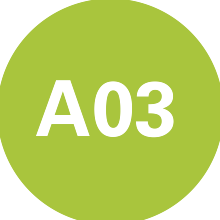People
Publications
Preprints
- Ruan, L., & Rybak, I. (2025). A hybrid-dimensional Stokes-Brinkman-Darcy model for arbitrary flows to the fluid-porous interface. In arXiv preprint arXiv:2502.01368. https://doi.org/10.48550/arXiv.2502.01368
- Strohbeck, P., Discacciati, M., & Rybak, I. (2025). Optimized Schwarz method for the Stokes-Darcy problem with generalized interface conditions. In arXiv preprint arXiv:2504.01784. https://doi.org/10.48550/arXiv.2504.01784
- Ruan, L., & Rybak, I. (2024). Stokes-Brinkman-Darcy models for fluid-porous systems: derivation, analysis and validation. In arXiv preprint arXiv:2404.16577. https://doi.org/10.48550/arXiv.2404.16577
- Strohbeck, P., & Rybak, I. (2024). Efficient preconditioners for coupled Stokes-Darcy problems with MAC scheme: Spectral analysis and numerical study. In arXiv preprint arXiv:2404.18639. https://doi.org/10.48550/arXiv.2404.18639
Conference Papers
- Eggenweiler, E., Nickl, J., & Rybak, I. (2023). Justification of generalized interface conditions for Stokes-Darcy problems. In E. Franck, J. Fuhrmann, V. Michel-Dansac, & L. Navoret (Eds.), Finite Volumes for Complex Applications X - Volume 1, Elliptic and Parabolic Problems (Vol. 432, pp. 275–283). Springer Nature Switzerland. https://doi.org/10.1007/978-3-031-40864-9_22
- Strohbeck, P., Riethmüller, C., Göddeke, D., & Rybak, I. (2023). Robust and efficient preconditioners for Stokes-Darcy Problems. In E. Franck, J. Fuhrmann, V. Michel-Dansac, & L. Navoret (Eds.), Finite Volumes for Complex Applications X - Volume 1, Elliptic and Parabolic Problems (Vol. 432, pp. 375–383). Springer Nature Switzerland. https://doi.org/10.1007/978-3-031-40864-9_32
- Eggenweiler, E., & Rybak, I. (2020). Interface Conditions for Arbitrary Flows in Coupled Porous-Medium and Free-Flow Systems. In R. Klöfkorn, E. Keilegavlen, F. Radu, & J. Fuhrmann (Eds.), Finite Volumes for Complex Applications IX - Methods, Theoretical Aspects, Examples (Vol. 323, pp. 345–353). Springer International Publishing. https://doi.org/10.1007/978-3-030-43651-3_31
Books
- Eggenweiler, E. (2022). Interface conditions for arbitrary flows in Stokes-Darcy systems : derivation, analysis and validation. Dissertation thesis, University of Stuttgart. https://doi.org/10.18419/opus-12573
Journal Articles
- Kröker, I., Oladyshkin, S., & Rybak, I. (2023). Global sensitivity analysis using multi-resolution polynomial chaos expansion for coupled Stokes-Darcy flow problems. Computational Geosciences, 27, 805–827. https://doi.org/10.1007/s10596-023-10236-z
- Mohammadi, F., Eggenweiler, E., Flemisch, B., Oladyshkin, S., Rybak, I., Schneider, M., & Weishaupt, K. (2023). A surrogate-assisted uncertainty-aware Bayesian validation framework and its application to coupling free flow and porous-medium flow. Computational Geosciences, 27. https://doi.org/10.1007/s10596-023-10228-z
- Strohbeck, P., Eggenweiler, E., & Rybak, I. (2023). A modification of the Beavers-Joseph Condition for Arbitrary Flows to the Fluid-porous Interface. Transport in Porous Media, 147, 605–628. https://doi.org/10.1007/s11242-023-01919-3
- Eggenweiler, E., Discacciati, M., & Rybak, I. (2022). Analysis of the Stokes-Darcy problem with generalised interface conditions. ESAIM: Mathematical Modelling and Numerical Analysis, 56, 727–742. https://doi.org/10.1051/m2an/2022025
- Eggenweiler, E., & Rybak, I. (2021). Effective coupling conditions for arbitrary flows in Stokes-Darcy systems. Multiscale Modeling and Simulation, 19, 731–757. https://doi.org/10.1137/20M1346638
- Rybak, I., Schwarzmeier, C., Eggenweiler, E., & Rüde, U. (2021). Validation and calibration of coupled porous-medium and free-flow problems using pore-scale resolved models. Computational Geosciences, 25, 621–635. https://doi.org/10.1007/s10596-020-09994-x
- Wagner, A., Eggenweiler, E., Weinhardt, F., Trivedi, Z., Krach, D., Lohrmann, C., Jain, K., Karadimitriou, N., Bringedal, C., Voland, P., Holm, C., Class, H., Steeb, H., & Rybak, I. (2021). Permeability Estimation of Regular Porous Structures: A Benchmark for Comparison of Methods. Transport in Porous Media, 138, 1–23. https://doi.org/10.1007/s11242-021-01586-2
- Eggenweiler, E., & Rybak, I. (2020). Unsuitability of the Beavers-Joseph interface condition for filtration problems. Journal of Fluid Mechanics, 892. https://doi.org/10.1017/jfm.2020.194
Research
About this Project
The aim of the project A03 is mathematical modelling, numerical simulation and analysis of coupled free-flow and porous-medium systems on the REV (macroscopic) scale.
New, more general interface conditions, which are valid for arbitrary flows in coupled flow systems, are required since classical coupling concepts provide reliable results only for one-dimensional flows (parallel or perpendicular) to the fluid-porous interface.
Results
Funding Period 1
In the first funding period, we rigorously derived and analysed generalised interface conditions for coupled single-phase free-flow and single-fluid-phase (fully saturated) porous-medium systems (Stokes-Darcy model) using the theory of homogenisation and boundary layer correctors. In this model, all the effective parameters were computed based on the pore-scale geometrical information. The coupled REV-scale model was validated numerically using the pore-scale resolved simulations and compared to other coupling conditions presented in the literature demonstrating the advantages of the developed generalised interface conditions. The well-posedness of the new REV-scale coupled model was proved.
Funding Period 2
In the current (second) funding period, we developed and analysed efficient solution strategies for coupled flow problems with the interface conditions developed in the first funding period (preconditioners and optimised Schwarz domain decomposition methods). We proposed three classes of preconditoners (block diagonal, block triangular and constraint) and conducted spectral and field-of-values analysis. We showed the efficiency and robustness of the developed solution strategies in numerical experiments. We also derived a coupling concept for single-phase free-flow and two-fluid-phase (partially saturated) porous medium using dimensional model reduction. The assumptions were: flat interface, laminar flow in the free-flow domain and non-isothermal, non-compositional system. For the resulting non-linear problem, we developed a domain decomposition method and a time-splitting scheme.
In collaboration with the research projects A02, D03 and INF, we investigated different coupling approaches (classical and generalised interface conditions and pore-network model) in a joint benchmark. Currently, we extend this work and investigate the impact of different pore geometries, surface roughness and the coupling of the Navier-Stokes to the Darcy flow using the generalised coupling conditions. In the framework of the SFB 1313 internal exchange programme with project B02, we analysed the system matrices arising from discretisation of the TPM phase-field model and studied several possible preconditioners to accelerate the convergence of the GMRES method. This lays the foundation for our joint work in the third funding period.
Future Work
The former and current research directions of the project A03 are mathematical modelling of coupled free-flow and porous-medium systems on the REV scale, numerical simulation, analysis and validation of the new models. Our goal for the third funding phase is the extension of mathematical and computational models developed in the first and second funding periods taking into consideration species and energy transport. This will allow us to describe evaporation processes from the soil influenced by the free-flow dynamics and to contribute to the joint benchmark within SFB 1313 organised by project D03 and to the vision topic salt. Additionally, we adapt our models to describe fluid flow in fractured porous media extending our application areas.
The effective model parameters appearing in the new coupling conditions for our REV-scale models will be computed using the pore-scale resolved simulations in collaboration with project A02. To support the validation process for our REV-scale models, the visualisation tool "Interactive Multi-Scale Analysis" developed by project D01 will be applied. We will also provide effective model parameters for the experimental setup in project A06. Additionally, we will collaborate with projects B02 and Z02 on comparison of different models for fractured porous media and development of efficient preconditioners.
International Cooperation
Aix-Marseille University, France
We collaborate with Prof. Philippe Angot on validation and calibration of the REV-scale model with generalised interface conditions.
Loughborough University, UK
We collaborate with Reader Dr. Marco Discacciati on domain decomposition methods for coupled flow problems with single- and two-fluid-phase porous media.
For further information please constact

Iryna Rybak
PD Dr.Project Leader, Research Project A03







